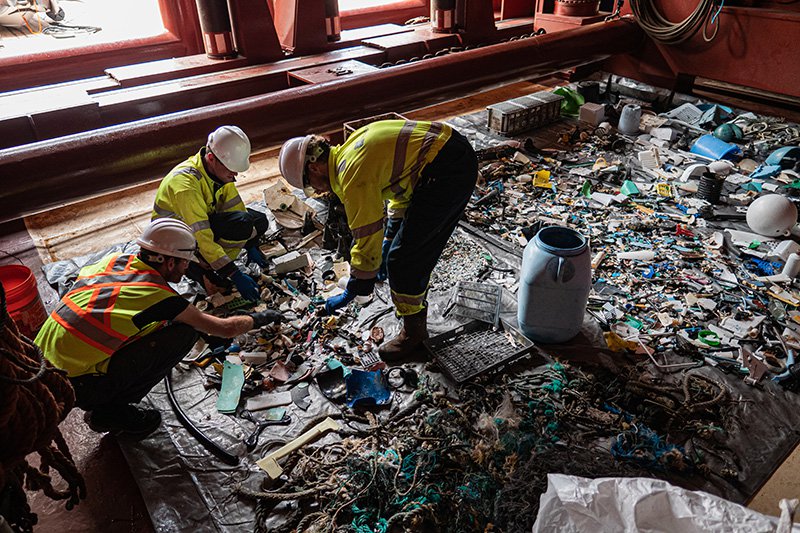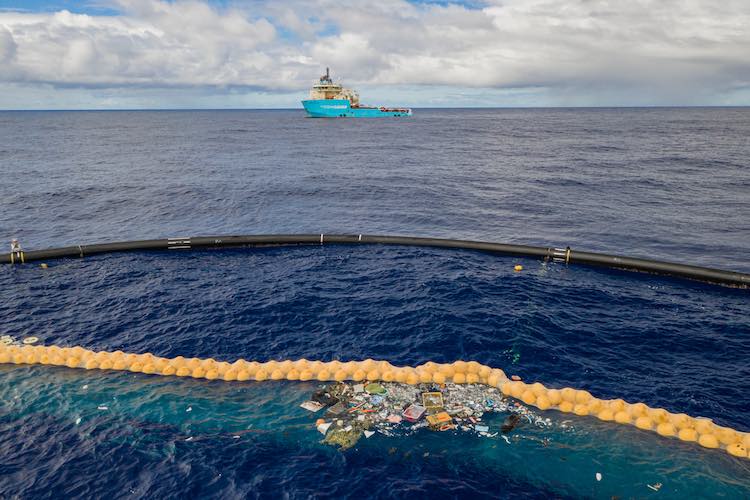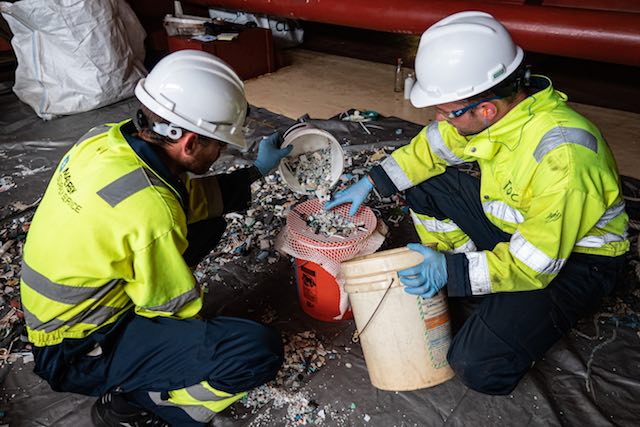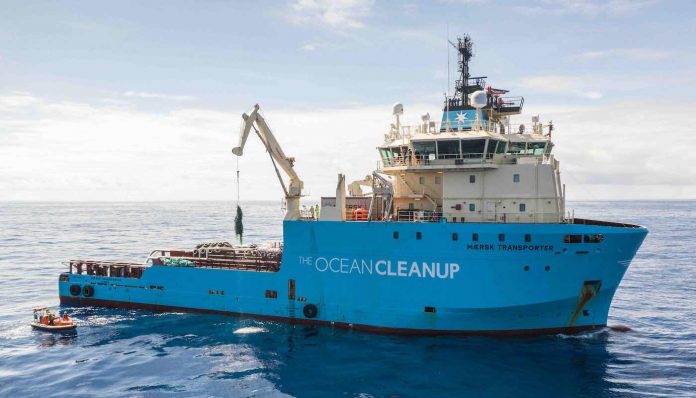
In a historic first, a massive floating device made by conservationists to clean up plastic from the ocean has now successfully collected trash from the Great Pacific Garbage Patch.
The machine, invented by 25-year-old Dutch inventor and engineer Boyan Slat, consists of a massive line of cork floats holding a huge skirt which traps the garbage below.
The Ocean Cleanup has recently announced that the system could capture and hold trash varying from visible plastic debris to abandoned fishing gear, also known as “ghost nets”—and even tiny microplastics as small as 1 millimeter.

The Ocean Cleanup
Launched from Vancouver in June 2019, The Ocean Cleanup Project’s high-tech System 001/B is fitted with a range of devices such as sensors, cameras, solar-powered lights, and satellite antennae which enable The Ocean Cleanup to keep tabs on it using GPS and use a dedicated support vessel to collect trapped plastic every few months before it brings it back to dry land.
System 001/B simulates a coastline while also uses the ocean’s force to trap the pieces of plastic debris that are estimated to be swirling around in the patch.

Marine life can safely swim around the giant boom. According to marine biologists that have tracked the system, no adverse environmental impact has resulted from the system’s deployment.


In case you missed it, here is a short recap of our announcement today. pic.twitter.com/bGhrkty5W6
— The Ocean Cleanup (@TheOceanCleanup) October 2, 2019
Our vessel (with cleanup system) now in transit to port for crew change; expect to be back in the patch for final leg of the System 001/B campaign around Oct 17. pic.twitter.com/P9rmxU136w
— Boyan Slat (@BoyanSlat) October 3, 2019
Experts and conservationists have recently sounded the alarm over the plastics and microplastics that are inundating the planet’s oceans and water supplies, by leaching carcinogenic toxins and chemicals into the marine environment. Meanwhile, plastic drink containers and trash used by fishers are trapping, confining, and killing marine wildlife such as fish and birds.
Nearly 8 million metric tons of plastic enter the ocean every year. pic.twitter.com/p2iYjP1bId
— Vala Afshar (@ValaAfshar) October 2, 2019
Plastic pollution has reached such large proportions that an estimated 100 million tons of it can now be found in the oceans, as reported by the United Nations, devastating such industries as tourism and fishing while embedding itself on every level of the food chain. Between 80% and 90% of plastic waste in the ocean comes from land-based sources. According to a report presented in the 2016 World Economic Forum in Davos, Switzerland, it’s estimated that plastic waste in the oceans will outweigh all fish by 2050.













COMMENTS